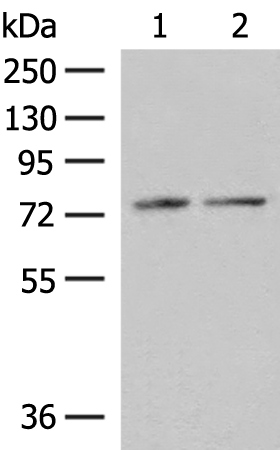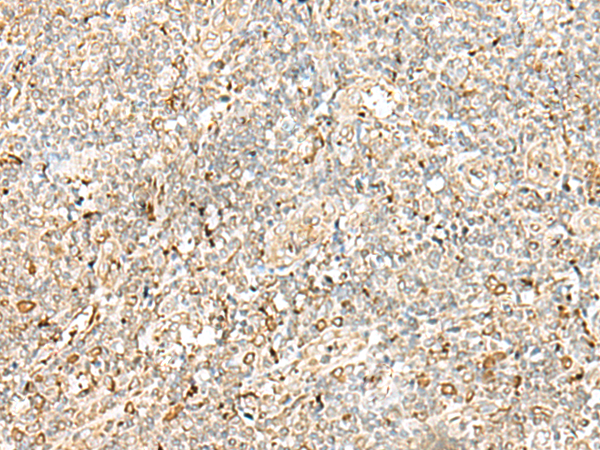


| WB | 咨询技术 | Human,Mouse,Rat |
| IF | 咨询技术 | Human,Mouse,Rat |
| IHC | 1/40-1/200 | Human,Mouse,Rat |
| ICC | 技术咨询 | Human,Mouse,Rat |
| FCM | 咨询技术 | Human,Mouse,Rat |
| Elisa | 1/5000-1/10000 | Human,Mouse,Rat |
| Aliases | ERP70; ERP72; ERp-72 |
| WB Predicted band size | 73 kDa |
| Host/Isotype | Rabbit IgG |
| Antibody Type | Primary antibody |
| Storage | Store at 4°C short term. Aliquot and store at -20°C long term. Avoid freeze/thaw cycles. |
| Species Reactivity | Human, Mouse, Rat |
| Immunogen | Fusion protein of human PDIA4 |
| Formulation | Purified antibody in PBS with 0.05% sodium azide and 50% glycerol. |
+ +
以下是3篇涉及PDIA4抗体的参考文献及其简要摘要:
1. **文献名称**:*PDIA4 acts as a prognostic biomarker and drives cancer progression through immune cell infiltration in hepatocellular carcinoma*
**作者**:Li Y, et al.
**摘要**:该研究利用PDIA4抗体检测肝癌组织中PDIA4蛋白表达,发现其高表达与不良预后相关,并通过调节肿瘤微环境中免疫细胞浸润促进肝癌进展。
2. **文献名称**:*Endoplasmic reticulum protein PDIA4 interacts with insulin receptor and regulates glucose homeostasis*
**作者**:Wang X, et al.
**摘要**:通过免疫共沉淀(使用PDIA4抗体)发现PDIA4与胰岛素受体相互作用,参与2型糖尿病中胰岛素信号通路的调控,提示其可作为代谢疾病的治疗靶点。
3. **文献名称**:*PDIA4 contributes to oxidative stress and autophagy in Alzheimer's disease models*
**作者**:Chen L, et al.
**摘要**:研究利用PDIA4抗体进行免疫荧光分析,证实PDIA4在阿尔茨海默病模型中通过内质网应激加剧神经元氧化损伤和自噬异常,促进病理蛋白聚集。
The protein disulfide isomerase family A member 4 (PDIA4), also known as ERP72. is a member of the protein disulfide isomerase (PDI) family, which plays a critical role in endoplasmic reticulum (ER)-associated protein folding and quality control. PDIA4 facilitates the formation, isomerization, and reduction of disulfide bonds in nascent polypeptides, ensuring proper tertiary structure. Structurally, it contains thioredoxin-like domains with catalytic CXXC motifs, enabling redox activity. Unlike some PDIs, PDIA4 is primarily involved in ER stress responses, acting as a chaperone during unfolded protein response (UPR) activation to mitigate cellular stress.
Studies link PDIA4 to various pathological conditions, including cancer, neurodegenerative diseases, and metabolic disorders. Overexpression of PDIA4 has been observed in tumors, where it may promote cell survival under hypoxic or chemotherapeutic stress. In neurodegenerative contexts, dysregulated PDIA4 is associated with protein misfolding aggregates, such as amyloid-β and α-synuclein.
PDIA4 antibodies are essential tools for detecting protein expression in research applications like Western blotting, immunohistochemistry, and immunofluorescence. They help elucidate PDIA4’s role in ER stress pathways, disease mechanisms, and potential therapeutic targeting. Recent investigations also explore its utility as a biomarker for disease progression or treatment response, emphasizing its dual functional and diagnostic relevance.
×